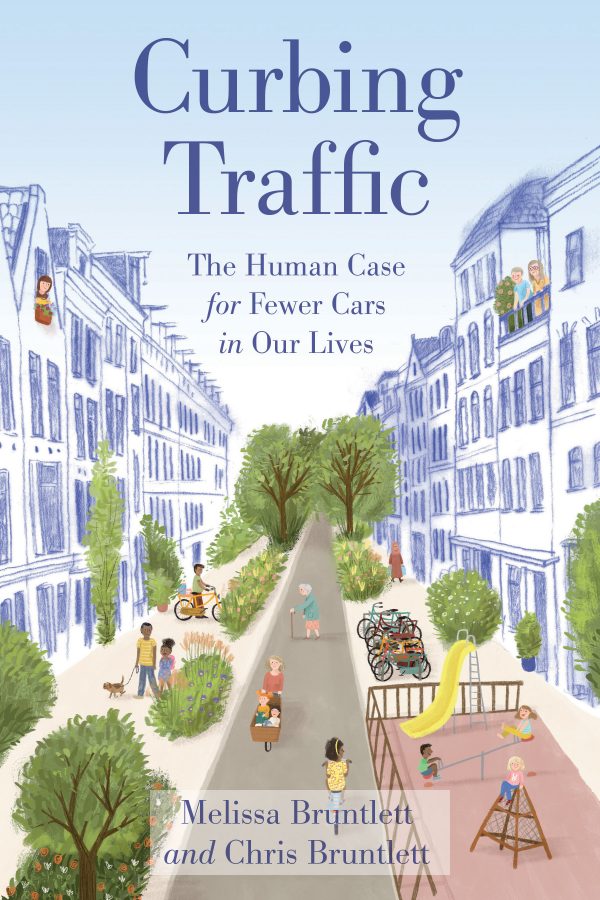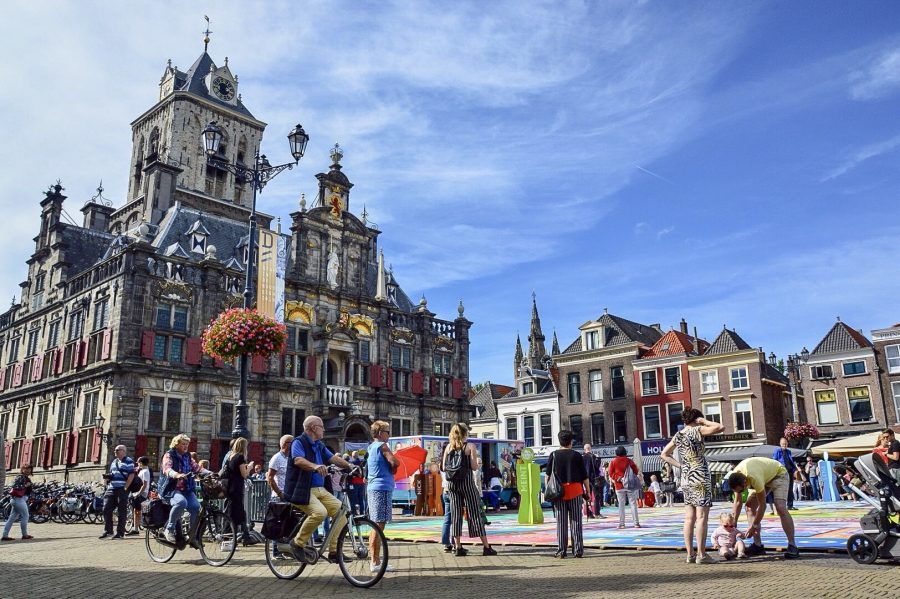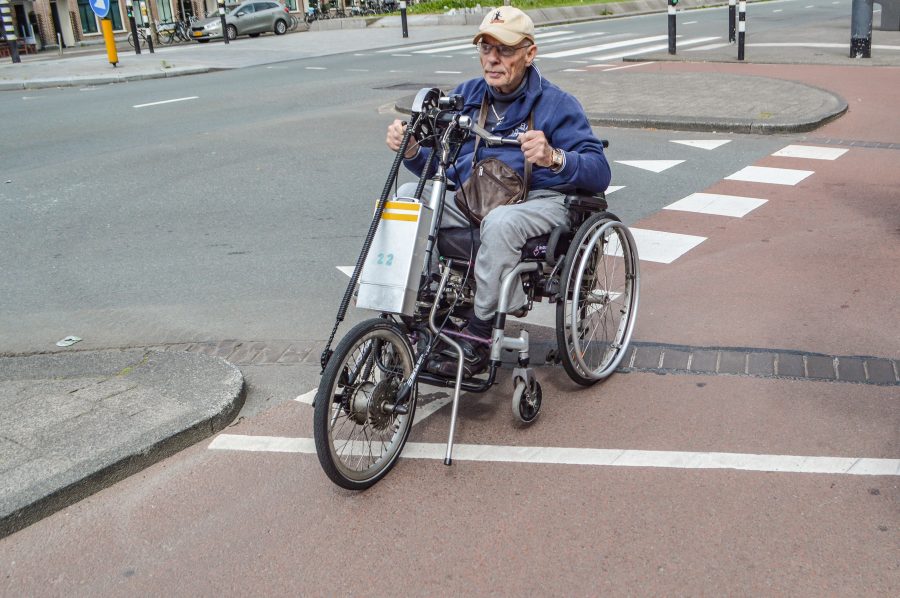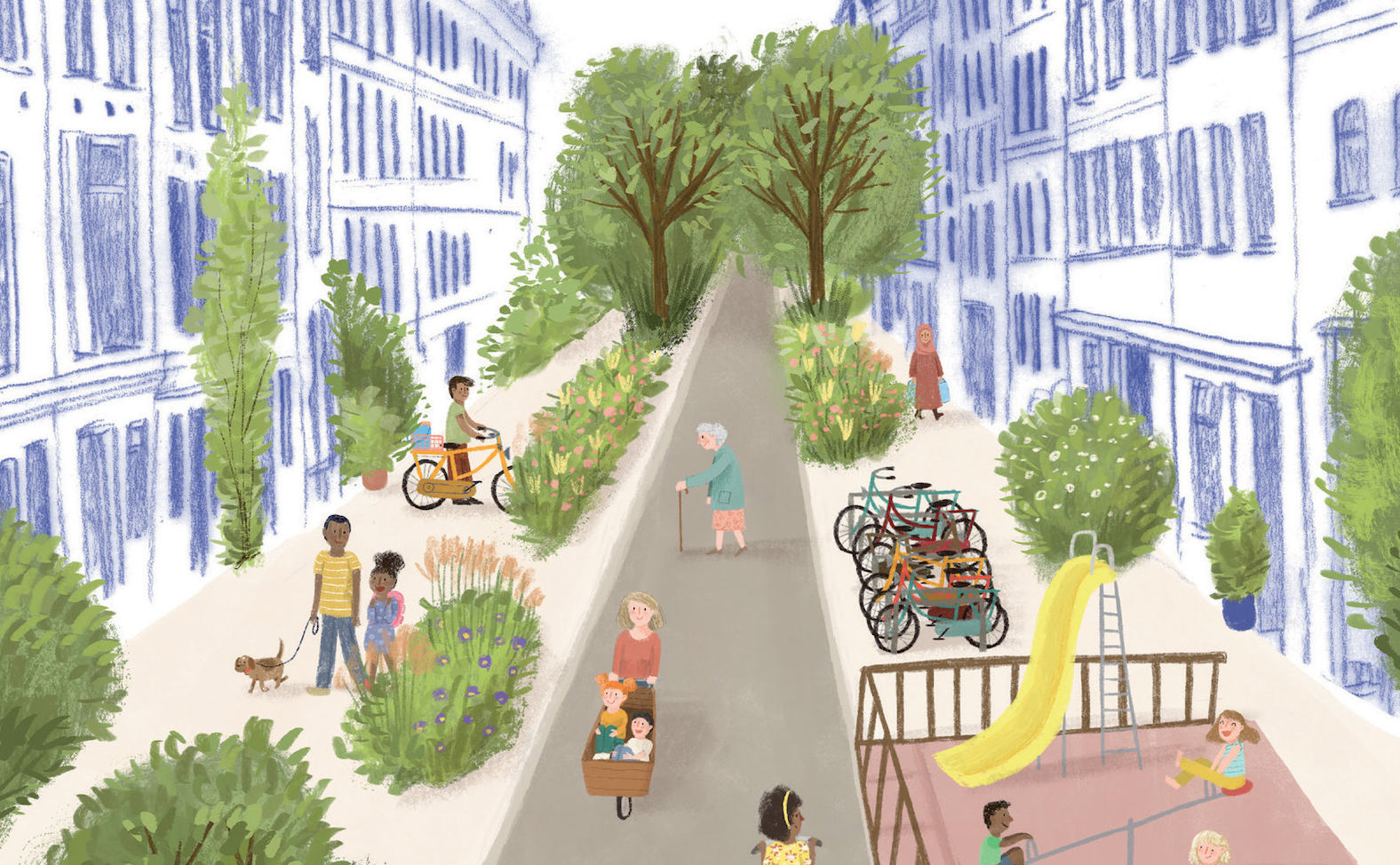July 23rd, 2021
Jillian Banfield, Bicycle Mayor of Halifax, Canada, spoke with Melissa and Chris Bruntlett about their new book, Curbing Traffic. She explores the topics of ambiguity in infrastructure, disability, & accessibility in relation to the realities of cycling in her city.
Talking to Melissa and Chris Bruntlett is a lot like reading their new book, Curbing Traffic – The Human Case for Fewer Cars in Our Lives. I nodded my head the whole time, felt very validated in my beliefs, and was sad when it was over.
Melissa and Chris were kind enough to spend an hour talking to me, a cycling advocate who has never written a book review or interviewed authors. They’re fellow Canadians, but I think we’re bonded by a deeper connection – an understanding that safe streets are a tool for social justice and equity.
I have no doubt that others with more experience will do a better job reviewing the whole book, so I decided to select a few themes to focus on. I wanted Melissa and Chris to help me untangle a few threads that spun themselves into a knot in my head as I read certain sections of the book.
I began the conversation by exploring a tension I found between their description of the deliberate ambiguity that is built into some street infrastructure in the Netherlands, and my own experience in Halifax of the confusion caused by lack of clarity in infrastructure. I love the idea of more flexible public spaces where people communicate with each other to navigate the space. I experienced it myself in Amsterdam, where traffic lights have for example been intentionally switched off at certain intersections, leading to “negation in motion” between modes that has improved traffic flow with no changes in safety.
In Halifax and other car-centric urban environments however, people walking, rolling and cycling are too often left to their own devices by ambiguous infrastructure, but not in the thoughtful Dutch way. Even our newest infrastructure causes confusion – how does a person cycling make a left-hand turn from a curb-protected bike lane on the right side of the street? There is nothing in the street design that guides them.
Given the dominance of cars and our nascent cycling culture, what Halifax currently needs is infrastructure that makes it obvious to everyone how to interact on the street, because having to interact with cars in such a subjugated manner leaves little room for error. In our case, infrastructure needs to be obvious, because the associated risks are injury or death.
Chris explained to me that deliberately ambiguous intersections in the Netherlands are not “entry-level” design. Rather, they are possible after years of good design changes that slow and reduce the volume of private vehicles while also increasing the volume of bikes. He agreed that there is a feedback loop between the infrastructure and users’ trust in each other. Good infrastructure supports people to work together in public space and, with increased trust and empathy over time, the infrastructure responds to further provide opportunities for trust.
In Halifax, we need more of what is considered entry-level design, where modes are segregated from each other and cars are “tamed”. Over time, these changes can get us closer to not just the infrastructure, but also the ethos of the Netherlands. We should not ignore the fact that the way we design our streets can affect our culture, and our relationships with each other.

The second knot of threads I asked Melissa and Chris to help me unwind focused on disability and accessibility. To their credit, the Bruntletts acknowledged that disabled people need to be in the room and that they cannot speak for them. I asked them to tell me more about the experiences of blind people in the Netherlands, especially in the context of deliberately ambiguous intersections or streets where all modes share the space. Some cues, such as audible signals and tactile pavement markings are used. Chris described watching a blind person using a white cane in Delft’s city centre, which is a big, shared space. From Chris’ perspective, the blind person makes their intentions known via their cane and other users move slowly and are cognisant of what to look out for.
I am intrigued, and would like speak with those blind folks myself to get their perspectives. Does the space work for them? How can it be better? Melissa suggested there are some pieces that are not perfect, such as public transport.
On the theme of accessibility, I had been eagerly awaiting “The Accessible City” chapter. In my role as Bicycle Mayor, I often talk about how my bike is my mobility aid and I advocate for infrastructure that better supports a wide range of disabled people to cycle. Opening up this chapter, I noticed a misstep that I felt actually validated the Bruntletts’ argument that disabled people need to be involved in decision making. The term “wheelchair bound” unfortunately appeared in the chapter. The term is widely understood by disabled people as ableist. In fact, wheelchairs are mobility devices that afford freedom and independence.
Moving past the hiccup in language, I enjoyed this chapter because it focused on the experience of a woman named Maya, who primarily uses a motorised scooter. The wide paths and forgiving infrastructure in the Netherlands facilitate her mobility.
I felt it was an important choice to highlight a disabled person using the infrastructure. Too often, accessibility and active transportation are pitted against each other. Disabled people are weaponised on both sides. Those who want to maintain the status quo argue that disabled people will be harmed by the removal of parking or private vehicles lanes. Those who want more active transportation use my Bicycle Mayor tweets to show that disabled people cycle and that claims about parking needs are unfounded. The truth is that not all people can cycle and cars are mobility devices. As Melissa and Chris indicate, the trouble is that car-centric environments are disabling. Not all disabled people can or want to drive, nor can they necessarily afford it.

To Melissa and Chris, an accessible city is one in which everyone can navigate comfortably using whatever option they like. Chris said that the discussion around access is becoming more common in Dutch planning, with a recognition that access means something different to everyone.
Although I agree that accessibility is broad and people’s needs are many and diverse, I think it is important to specifically talk about disability and ensure disabled people are meaningfully included in decision making. As Gabrielle Peters has said, access for wheelchair users benefits people using strollers, but the reverse is not necessarily the case. I’m grateful that Melissa and Chris understand the need for disability representation and are champions for accessibility. Their new book has the potential to turn every reader into an ally.
Ultimately, the mark of any good experience for me is that I learn something. Curbing Traffic helped me reflect more on the extent to which I am steeped in car culture and the impact that this culture has on people beyond their experience of streets. Car culture erodes opportunities for empathy and trust, which, I believe, are the foundation we need to move together into the future.

